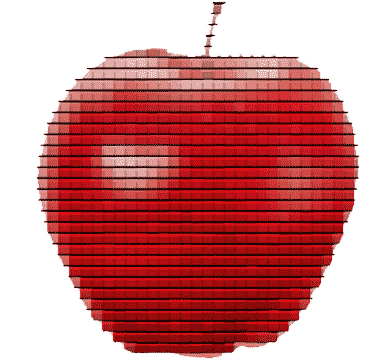30 September & 1 October 2021
Shape Dynamics is a framework for formulating physical theories relationally, without reference to absolute space and time. Based on philosophical ideas of Leibniz and Mach, it was introduced by Barbour and Bertotti in 1982 and has since given rise to new approaches to classical, general relativistic, and quantum physics.
The workshop will feature many of the leading researchers in this field and present recent results that offer new perspectives on gravity, spacetime singularities, typicality, the arrow of time, and even quantum gravity.
Speakers: Julian Barbour, Sheldon Goldstein, Sean Gryb, Flavio Mercati, Tim Koslowski, David Sloan, Sahand Tokasi.
Organizers: Dustin Lazarovici (UNIL), Paula Reichert (LMU)
The workshop will be held via Zoom.
Recordings
Recordings of the talks are available on YouTube.
Program
| Thursday, 30 Sep. | ||
|---|---|---|
| 13:45 – 14:00 (CET) | Welcome | |
| 14:00 – 15:00 | Julian Barbour | Shape Dynamics: Principles and PossibilitiesShape dynamics aims to recast and unify the foundations of physics and cosmology. It is a relational formulation of dynamically closed classical universes and a conjectured basis for their quantum description. The fundamental entities are shapes defined by points and angles. Only ratios of quantities of the same kind, pure numbers, appear. The principles and possibilities that flow from them are illustrated in a Newtonian model of point particles in Euclidean space; the generalisation to Riemannian geometries and multiple forces is sketched. The set of all shapes is shape space. It is compact and a natural metric on it defines a probability measure. The primary invariant of the theory’s fundamental symmetry group is called the complexity. It is a continuous function on shape space, bounded below, unbounded above, and a candidate quantum time that has a birth but no end. In the particle model the complexity is simultaneously: the scale-invariant form of the Newtonian gravitational potential; a measure of variety and creation that replaces the statistical notion of entropy; an intrinsic size of the universe whose inverse is a `Planck length’; and a quantity simply related to a `Planck time’. |
| 15:00 – 16:00 | Sahand Tokasi | Classical laws of motion on Shape SpaceIn this talk I will explain how the laws of motion of a classical system for its shape degrees of freedom can be derived, and under which circumstances the existence of such laws are to be expected. We will first explain why the Newtonian theory of classical mechanics cannot be a complete theory of absolute space and absolute time, even if you accept the existence of absolute space and time as advocated by Sir Isaac Newton. We then explain how Newtonian theory can be completed in a way to make a fully relational reformulation of classical physics possible, and we will shortly discuss some cosmological ramifications of this new theory. At the end, we work out the ideas in detail for a three body universe, and derive the respective equations of motion on shape space explicitly in suitable coordinates. |
| 16:00 – 17:00 | Break | |
| 17:00 – 18:00 | Sheldon Goldstein | Remarks on Relational PhysicsI shall discuss (classical and quantum) relational physics, involving relational space and relational time: |
| 18:00 – 19:00 | Discussion |
| Friday, 1 Oct. | ||
|---|---|---|
| 14:00 – 15:00 (CET) | Flavio Mercati | Deterministic continuation through singularitiesI will review the results of a series of papers in collaboration with D. Sloan and T. Koslowski, in which we show that the shape-dynamical description of Bianchi IX cosmological models (coupled with a homogeneous scalar field) is regularizable at the big bang singularity. This implies that each and every solution can be continued uniquely through the singularity, questioning a widely-held expectation that gravitational singularities break down classical determinism, and require quantum effects to be resolved. I will then discuss recent development in the program aiming at extending this result beyond homogeneous cosmological models: I will illustrate the case of Kantowski–Sachs universes, which describe the interior of a Schwarzschild black hole, and of homogeneous cosmology coupled with gauge fields. |
| 15:00 – 16:00 | Sean Gryb | When scale is surplusAn important symmetry in shape dynamics is “dynamical similarity.” Dynamical similarity transformations result from global rescalings of the dynamical variables of the theory such that the unit of action gets rescaled. Since they change the unit of angular momentum, these transformations are non-symplectic: they don’t preserve Liouville volume. Quotienting by dynamical similarity thus often leads to significant qualitative and quantitative changes in a theory: arrows of time appear and singularities disappear. But such a quotient is not always warranted. In the Kepler problem, for example, this would identify all solutions with the same eccentricity. It is therefore important to understand when (if ever) dynamical similarities can be treated as gauge symmetries and when they can’t. In this talk, we will develop a philosophical framework for determining when the symmetries of a particular theory should be treated as gauge and when they should not. When applied to cosmology, our framework prescribes that dynamically similar structure should indeed be taken as surplus — in agreement with principles of shape dynamics. |
| 16:00 – 17:00 | Break | |
| 17:00 – 18:00 | David Sloan | Removing Scale from PhysicsMany classical descriptions of physical systems invoke a notion of scale that is not observable from within the system itself. I will show how symmetries between systems which differ in their overall scale can be used to excise any reference to scale from dynamics. This will be achieved through the identification of `dynamical similarities’ which alter the scale of a system, but not the intrinsic shapes. We will begin with symplectic systems and derive from them the contact dynamics that describes motion in terms of pure shapes. We will see that in removing scale we reveal that the motion of the shapes is non-conservative, with the effect of change of scale being rendered through apparent friction. Through simple physical examples I will show how this brings about measure focussing and which can be treated in some cases as an apparent arrow of time. The shape systems will be shown to follow from an action principle written purely in shape terms, with implications for both relativistic and quantum mechanical formulations of shape dynamics. |
| 18:00 – 19:00 | Tim Koslowski | Complexity as time in a quantum universeAn objective description of the physical universe is necessarily relational. This leads to the fundamental postulate of classical shape dynamics: “The universe is described as an equation of state of the geometry of an unparametrized curve in relational configuration space (i.e. shape space).” The shape of the universe carries an intrinsic time-stamp given its complexity, in a manner analogous to how a system in a box carries a time-stamp given by its entropy. However, unlike a system in a box, there is no external overarching time, this role is played solely by complexity itself. This leads to a radical proposal for quantum cosmology: The wave function of the universe is defined on level surfaces of complexity and its evolution equation describes the evolution from lower to higher complexity level surfaces. This proposal has two immediate consequences: 1. The evolution possesses points where the structure of the Hilbert-space changes, i.e. when the complexity level-surface changes topology. 2. Any finite evolution of a quantum field reduces to a well defined quantum mechanical problem, since any reasonable complexity functional grows without bound as the number of degrees of freedom increases. In this talk I present some models that illustrate these properties. |
| 19:15 – 20:00 | Final Discussion |
Click on the talk titles to see the abstract

